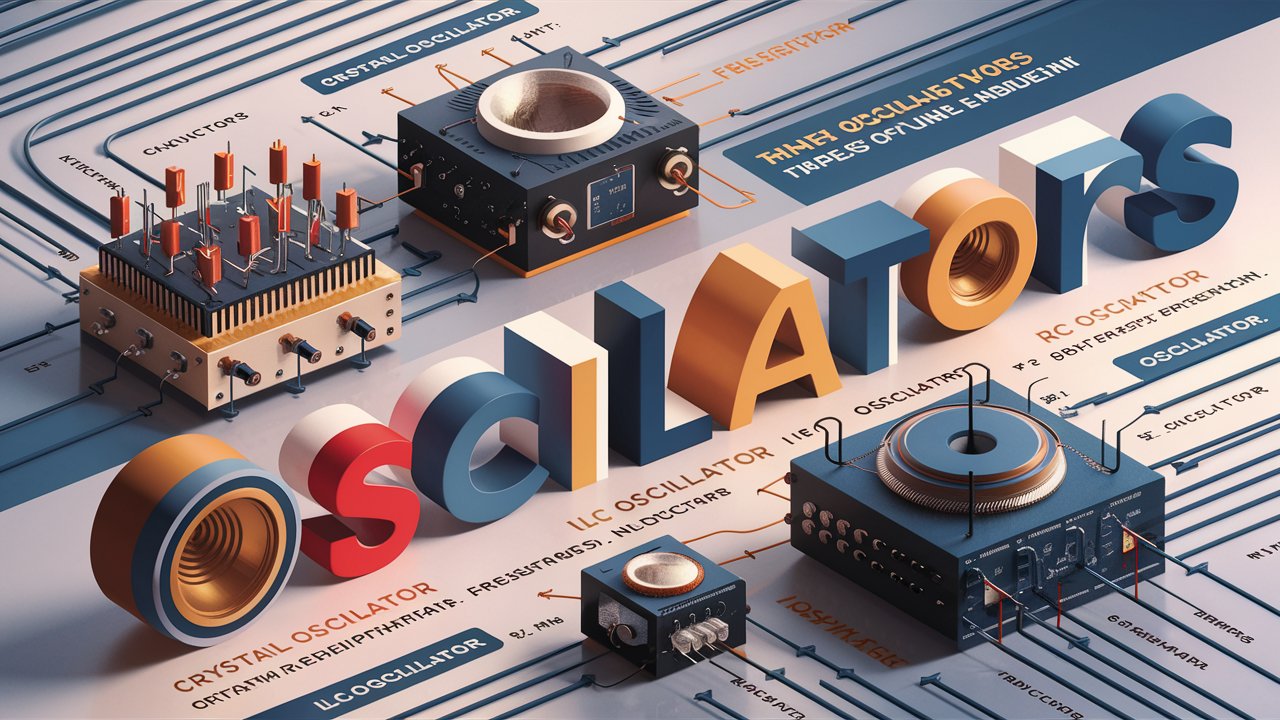Introduction
Oscillators are fundamental components in electronic circuits, playing a crucial role in generating periodic signals. These signals are vital in a myriad of applications, ranging from simple timing functions to complex signal processing tasks. This guide delves into the intricacies of oscillators, exploring their types, working principles, applications, and benefits.
What is an Oscillator?
An oscillator is an electronic circuit that produces a continuous, oscillating electrical signal, usually in the form of a sine wave or square wave. The primary purpose of an oscillator is to convert DC (direct current) from a power supply into an AC (alternating current) signal. This periodic signal is essential in various electronic devices and systems.
Key Components of Oscillators
Amplifier: Increases the amplitude of the signal.
Feedback Network: Feeds a portion of the output signal back to the input to sustain oscillations.
Frequency-Determining Components: Resistors, capacitors, and inductors that set the oscillator's frequency.
Types of Oscillators
Oscillators can be broadly categorized based on their waveform output and frequency range. Here are some common types:
1. Sinusoidal Oscillators
These oscillators generate a sine wave output. They are widely used in communication systems for signal generation and processing.
a. RC Oscillators
Working Principle: Utilize resistors (R) and capacitors (C) to determine the frequency.
Applications: Low-frequency applications such as audio signal generation.
Example: Phase Shift Oscillator, Wien Bridge Oscillator.
b. LC Oscillators
Working Principle: Use inductors (L) and capacitors (C) to form a resonant circuit.
Applications: Radio frequency (RF) generation and transmission.
Example: Colpitts Oscillator, Hartley Oscillator.
c. Crystal Oscillators
Working Principle: Utilize the mechanical resonance of a vibrating crystal (usually quartz) to generate a precise frequency.
Applications: High-stability applications like clocks, watches, and microprocessors.
Example: Quartz Crystal Oscillator.
2. Relaxation Oscillators
These generate non-sinusoidal waveforms, such as square, triangle, or sawtooth waves.
a. Astable Multivibrator
Working Principle: Continuously switches between two states, producing a square wave.
Applications: Timing circuits, clock pulses.
b. Monostable Multivibrator
Working Principle: Has one stable state and one unstable state, producing a single pulse when triggered.
Applications: Pulse generation, timers.
c. Schmitt Trigger Oscillator
Working Principle: Uses a Schmitt trigger to produce a square wave output.
Applications: Wave shaping, signal conditioning.
How Oscillators Work
Oscillators operate based on the principle of positive feedback. Here’s a simplified explanation:
Initiation: The amplifier generates a small initial signal.
Feedback: Part of the output is fed back to the input via the feedback network.
Sustenance: The feedback signal is in phase with the input, reinforcing the oscillation.
Frequency Control: Frequency-determining components (R, L, C) set the oscillation frequency.
Applications of Oscillators
Oscillators are indispensable in modern electronics, serving various critical functions:
1. Communication Systems
Generate carrier signals for AM, FM, and digital transmissions.
Synchronize signals in data transmission and reception.
2. Computers and Digital Systems
Provide clock signals to synchronize operations.
Used in phase-locked loops (PLLs) for frequency synthesis.
3. Consumer Electronics
Generate audio signals in devices like synthesizers and sound cards.
Control the timing in watches, clocks, and timers.
4. Measurement and Testing Equipment
Provide reference signals for oscilloscopes and function generators.
Used in signal generators for testing and calibration.
Benefits of Oscillators
Oscillators offer numerous advantages, making them essential in electronic design:
1. Precision and Stability
Crystal oscillators, in particular, offer high precision and stability, crucial for timekeeping and frequency control.
2. Versatility
Different types of oscillators cater to a wide range of applications, from audio frequencies to RF and beyond.
3. Cost-Effectiveness
Many oscillators, especially RC and LC types, are relatively inexpensive and easy to implement in circuits.
4. Reliability
Well-designed oscillators provide reliable performance over long periods, essential for critical applications.
Frequently Asked Questions (FAQs)
Q1: What is the difference between a crystal oscillator and an LC oscillator?
A1: A crystal oscillator uses the mechanical resonance of a quartz crystal for high precision and stability, while an LC oscillator uses inductors and capacitors for frequency determination, typically less precise but more tunable.
Q2: Why are oscillators important in communication systems?
A2: Oscillators generate carrier signals needed for modulating and transmitting information over various communication channels.
Q3: Can an oscillator be used as a timer?
A3: Yes, relaxation oscillators like astable multivibrators are commonly used as timers and pulse generators in digital circuits.
Conclusion
Oscillators are the heartbeat of electronic circuits, providing the essential periodic signals needed for a vast array of applications. From communication systems to consumer electronics, their role is indispensable. Understanding the types, working principles, and applications of oscillators is crucial for anyone involved in electronic design and development.
To know more, watch our video on Oscillators : https://www.youtube.com/shorts/Rje1wyqwO40
Connect with Us:
Visit Our Website : https://zenkaeurope.com/
Contact Us : info@zenkaeurope.com
Follow Us on Social Media:
Twitter : https://x.com/ZenkaEurope
YouTube : https://www.youtube.com/@ZenkaEurope
LinkedIn : https://www.linkedin.com/company/zenka-europe-uab/
Instagram : https://www.instagram.com/zenka_europe/
Facebook : https://www.facebook.com/zenkaeurope
